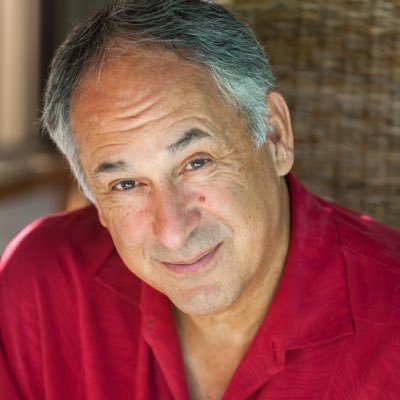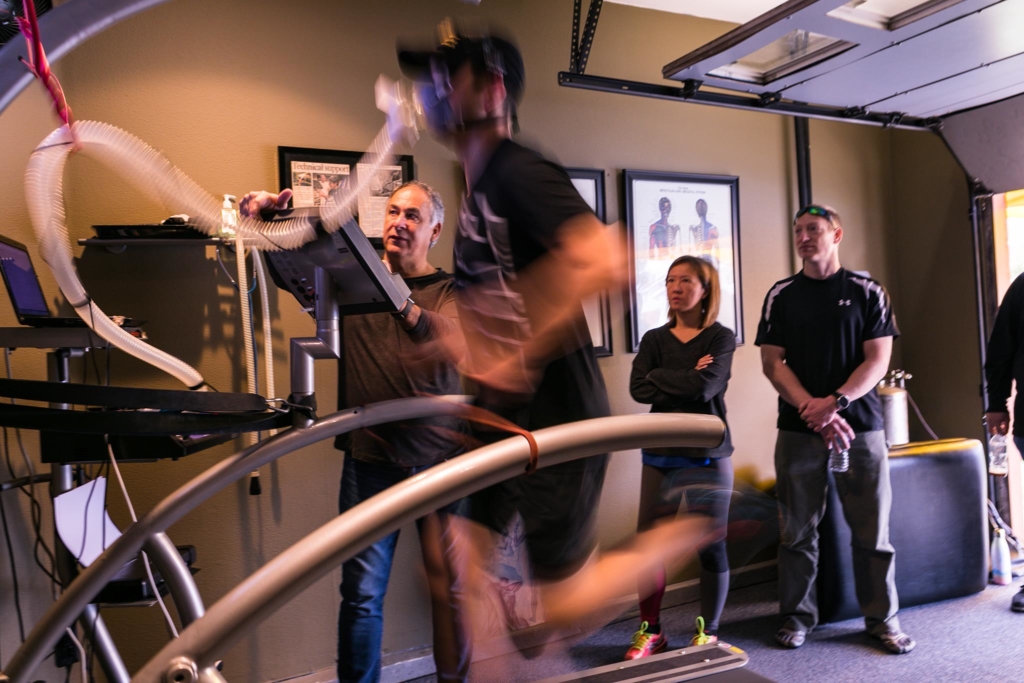 If you've run even a handful of races, or are part of one of the countless OCR-specific groups on social media, then you've probably heard his name.
If you've run even a handful of races, or are part of one of the countless OCR-specific groups on social media, then you've probably heard his name.
But who exactly is Richard Diaz?
Diaz is the mastermind behind Diaz Human Performance, and the current or former running coach of some of the best-known competitors in OCR, including Hunter McIntyre, Faye Stenning, and Veejay Jones. His career started some 30 years ago when he became heavily involved in the sport of triathlon. From there, he immersed himself in the fitness industry, and, as the owner of a health club, began to educate himself in the newest revelations in sports science.
Eventually, after forming Diaz Human Performance LLC, he focused more specifically on running, proper form and technique, and how to help extreme athletes attain peak performance. He has worked with athletes of all caliber, from 15-year-old amateur soccer players to some of the best known and most successful endurance athletes of our time.
He does not discriminate and takes as much pleasure in a phone call from one of his amateur clients telling him they made the podium at their last race, as he does in learning that one of his elites just won a world championship.
I was recently able to sit down with Richard and ask him some questions regarding how he got involved in OCR, the challenges he faces when working with both pro, and every-day athletes alike, and what advice he would give anyone looking to improve their performance on the course.
Why is proper running technique so important, and how do you feel it's related to overall performance?
Richard: We take the act of running for granted. Unfortunately, we find ways to corrupt the way we move. Shoe design has been blamed for much of the flawed alterations, along with compensations we've made from our environment, such as sitting too much. Suffice to say, bad running mechanics, however spawned, lead to injuries and hampered performance. For example, we are not designed to run on our heels. Over the past few decades, shoe design has trained us to target the heel first. Running has undergone a re-evolution with the awareness to make corrections that bring us back to natural functionality, and this change has proven highly effective in ultimately reducing injury and allowing athletes to take on more volume.
You seem to have focused specifically on working with OCR athletes, including some high-profile ones, in the last few years. Was that a conscious decision? If so, what inspired the shift?
Richard: I was first introduced to the notion that OCR was more than a passing fancy by Hunter McIntyre, when he sought me out to help him with his quest to win the Spartan World Championships, about three and a half years ago. Through investigating him, his history, and his success in this budding sport, I was fascinated with his particular challenge. We worked closely to improve his long distance stamina and speed, and, while doing so, I met other elites in the sport, and was drawn in by the passion and enthusiasm of these athletes. I was then introduced to Joe De Sena, which let to my invitation to the infamous Spartan Cruise. I conducted cardio-metabolic assessments on several of the top athletes in attendance, and, through this collective exposure, I was hooked. In all my years working with athletes from a variety of sports disciplines, I had never experienced such enthusiasm and desire to compete and improve.
What is the biggest challenge you face when trying to help endurance and OCR athletes?
Richard: The biggest challenge with OCR athletes and training them, is their insatiable lust for racing. I've often preached that ‘racing is not training'. I believe that, like in most other endurance sports, you must pick your races carefully and plan/train for them according to the challenges you will face. Training is about adaptation, and adaptation requires time. Going into races unprepared, simply because ‘all your friends are doing it', is the leading cause of injuries, in my opinion.
How do you feel what you do can help the amateur (i.e. Age Group) OCR athlete?
Richard: Regardless of the caliber of athlete, making positive corrections has always made a difference. I like to refer to what I call ‘The Phenomenon of Initial Values', meaning those with less talent have the most to gain. It is not unusual to see a novice athlete drop two to three minutes from their mile times, however, shaving 20 seconds off an elite's performance is equally valuable. Over the past four years, I have personally worked with an incredible number of OCR athletes while touring the country. It has been such a rewarding experience to hear how those once plagued by reoccurring injuries are now able to double or triple their running volume at will, pain free. At the end of the day, every stride is an education. The more you can do, the more you have the potential to improve.
What are some common misconceptions you think people have about run coaches in general, and, specifically, what it is that you do?
Richard: I think novice athletes (i.e. those who simply enjoy participating, not expecting to achieve elite status) assume they are not worth of a coaching relationship, for the simple fact that they don't see themselves winning. I think this is unfortunate, because getting professional advice can make a significant difference in their racing experience. In my case, my primary goal is to help my clients avoid injury. It's not fun anymore, when you are constantly battling injuries that could have been avoided. On the flip side, the path to performance travels the same path as injury prevention. A great number of the injuries in OCR are running-related, most of which could be avoided with proper guidance.
If you had to list the top three things a runner or OCR athlete should focus on, in order to improve performance, what should they be?
Richard:
1. Slow down, assess the things that need correction, and work towards those corrections. Slowing down is the key.
2. Take stock of your unique energy demands, both at rest and while exercising. Because I have a long history of providing clinical metabolic analysis of athletes (literally thousands, over the past 25 years), I've learned that most competitive athletes are undernourished. I've also found that most tend to train at an intensity that hovers at an anaerobic state, which habitually leads to energy depletion too early. Fatigue then sets in, and performance suffers. Developing an understanding of the process of manipulating the appropriate energetic pathways is critical for endurance athletes.
3. Respect the need for, and importance of, adequate recovery. It's a well-documented fact that we do not improve while we work, we improve only when, and if, we have recovered.
Richard sees clients from all over the world at his ‘lab' in Camarillo, CA, where he performs gait analyses, V02 MAX testing, and offers specialized personal coaching. He also travels the country doing clinics for sold out audiences. For more information, visit diazhumanperformance.com.



Leave A Comment